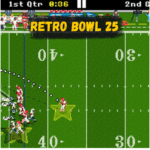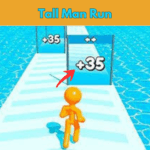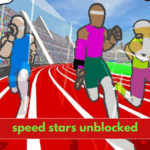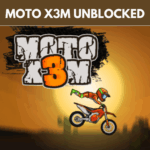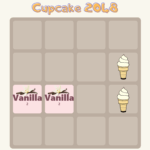Retro Bowl 25: Why the Simple Aesthetics Mask the Deep Strategy of a True number Game, Perfect for the Player Who Masters the Flip Phone NYT Crossword
Retro Bowl 25 arrives not just as a continuation of a beloved franchise, but as a sophisticated evolution of strategic sports gaming. Despite its pixelated, throwback aesthetic—a nostalgic nod that reminds one of simpler times, perhaps even the era of the trusty flip phone nyt crossword—this title demands a level of tactical acumen and deep analytical thinking that firmly secures its place in the 'number Games' category. It’s a game for those who appreciate the elegant complexity beneath a clean interface, the kind of intellectual challenge that parallels the satisfaction of solving a particularly tricky clue, like one involving a flip phone nyt crossword. This comprehensive article delves into the micro-management, play-calling strategies, roster construction, and psychological warfare that define the Retro Bowl 25 experience, proving that this gridiron classic is far more complex than its visual style suggests, and an ideal mental workout for fans who appreciate the cerebral engagement of a flip phone nyt crossword.
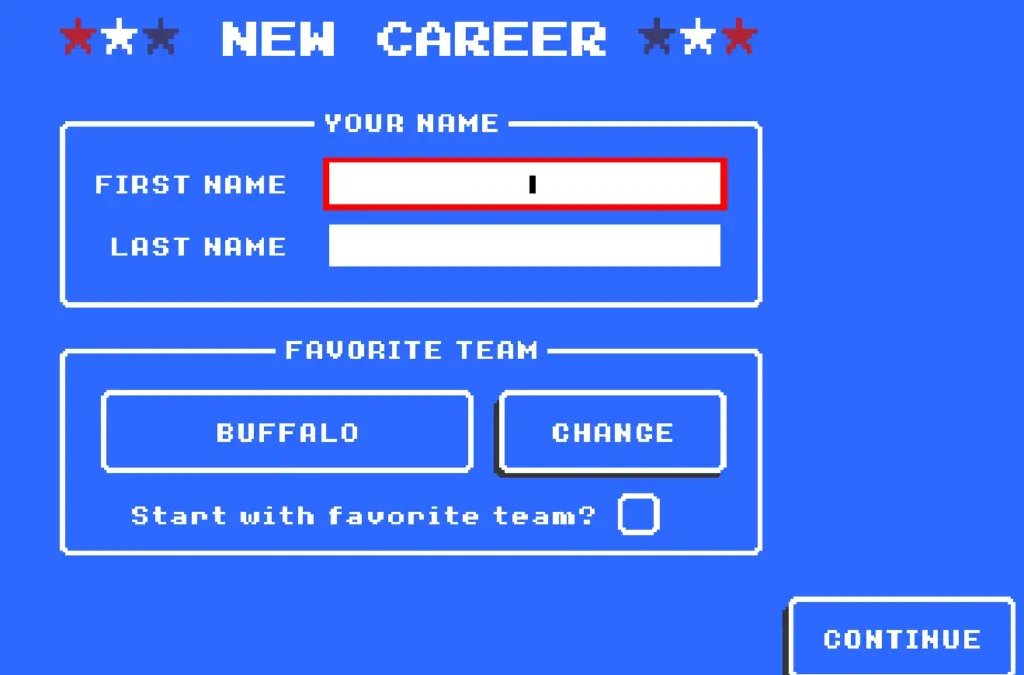
Beyond the Pixels: The Deep Strategy That Makes Retro Bowl 25 a number Game
The success of the Retro Bowl series, and particularly the anticipated depth of Retro Bowl 25, lies in its brilliant abstraction of American football. It strips away unnecessary visual clutter and cinematic fluff, forcing the player to focus purely on the strategic decisions. This focus shift transforms the game from a test of reflexes into a pure mental exercise, appealing directly to the mindset required to conquer a complex challenge like the flip phone nyt crossword. Success hinges on resource allocation, situational awareness, and predictive modeling.
Micro-Management: The Salary Cap and Roster Construction Puzzle
The off-field management is where Retro Bowl 25 truly earns its 'number Game' title. Players are constantly juggling the demands of the salary cap, player morale, and the brutal reality of aging talent. Deciding when to trade a high-performing but expensive veteran for draft capital, or when to invest heavily in a coordinator who boosts the team's overall output, requires sophisticated future-casting and risk assessment. This continuous financial and personnel puzzle demands the same meticulous planning and foresight needed to navigate a complex, multi-layered problem, reminiscent of solving a challenging flip phone nyt crossword. The decisions made here, months before the next season begins, are just as critical as the play-calling on the field.
Field Strategy: Maximizing Opportunities and Minimizing Risk
Every down in Retro Bowl 25 is a critical decision point. Unlike simulation games, the player is directly responsible for timing, trajectory, and risk assessment on every pass and run. Do you run the ball on 3rd-and-short to keep the clock moving, or risk a deep pass to convert and maintain offensive momentum? The 'go for it' decision on 4th down is perhaps the most defining, requiring a probabilistic calculation based on opponent strength, field position, and team morale. This dynamic, real-time strategic assessment is what separates the game from casual arcade fare, providing a mental engagement that is satisfying in the same way that finally cracking the code of a particularly opaque clue in a flip phone nyt crossword is rewarding.
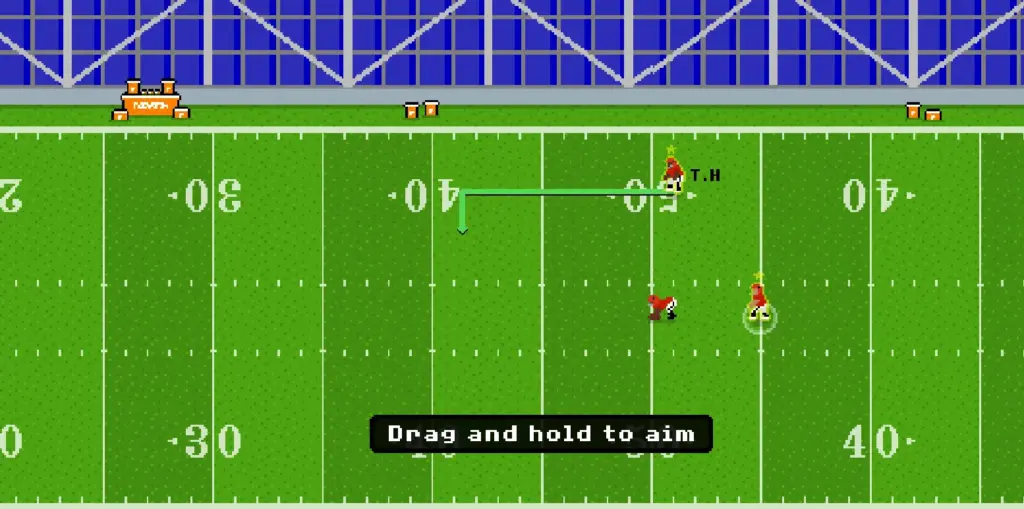
The simple aesthetic of Retro Bowl 25 is often misleading. The depth of strategy required to consistently win championships reveals a complexity that appeals to the dedicated puzzle-solver, the mind that enjoys the intricate layers of a demanding challenge. It’s the kind of game that offers the same structured intellectual satisfaction as mastering a complex puzzle, perhaps even one involving the cryptic nostalgia of a flip phone nyt crossword. Furthermore, understanding the nuances of how different player attributes impact team performance is a critical skill, demanding analytical rigor. The player who thrives here is the one who enjoys breaking down complex systems, a trait shared by those who excel at solving the intricate clues of a flip phone nyt crossword. The game's reliance on strategic foresight is a key factor in its appeal to the 'number Games' audience, a perfect digital pairing for the analog challenge of the flip phone nyt crossword.
The Predictive Edge: Outsmarting the AI Through Logical Play-Calling
The true test of a player in Retro Bowl 25 lies in their ability to predict the defensive response of the AI. Each opponent presents a different challenge, and success demands flexibility. This is where the game moves into the realm of 'predictive modeling,' a high-level cognitive function that is essential for both winning streaks and, interestingly enough, successfully navigating the logic gates of a complex puzzle or a particularly clever clue in the flip phone nyt crossword.
Table of Core Strategic Dilemmas and number Game Relevance
The following table outlines the main decision points in Retro Bowl 25 that elevate it beyond casual play and link it to the focused mental engagement of solving a flip phone nyt crossword.
| Strategic Dilemma | In-Game Decision | number Game Relevance / Flip Phone NYT Crossword Link |
|---|---|---|
| 4th Down Conversion | To 'Go For It' or Punt/Kick? | Probabilistic Reasoning: Calculating risk vs. reward, similar to committing to an answer in a flip phone nyt crossword with incomplete information. |
| QB Development | Upgrade Throwing Accuracy or Stamina? | Resource Allocation: Deciding where limited resources (Coaching Credits) will yield the maximum long-term benefit. |
| Defensive Focus | Invest in Defensive Line or Secondary? | Systems Thinking: Understanding how two parts of a system interact and where a weakness can be exploited. |
| Clock Management | Hurry Up Offense or Run Down the Clock? | Temporal Strategy: Making real-time decisions that impact future game states, a form of active cognitive load. |
The ability to effectively manage the clock, a subtle yet profound strategic element in Retro Bowl 25, is another area where the player’s mental acuity is tested. It requires constant awareness of the game state and an ability to execute a plan under pressure, a feeling of focused intensity often replicated when trying to solve a dense, challenging puzzle like the flip phone nyt crossword. This cerebral engagement is a core reason why fans spend hours meticulously planning their seasons and plays. The satisfaction of a well-executed clock-killing drive or a perfectly timed 4th-down conversion is an intellectual reward, just like the triumph of decoding a cryptic clue in a flip phone nyt crossword. The game's minimalist design forces players to rely solely on their intellect and judgment, qualities that resonate deeply with fans of other focused mental activities, including those who tackle the daily challenge of the flip phone nyt crossword. It's a game that respects the player's intelligence by offering layers of strategic depth beneath its simple exterior, much like the unexpected complexity hidden within a clue such as flip phone nyt crossword.
Moreover, the need to adapt your strategy against different opponent rankings and play styles introduces a variable element that keeps the mental challenge fresh. You can't rely on one tactic; you must continually evolve your game plan, making every season a new, intricate puzzle—a dynamic that is far more engaging than simply grinding through an easy level, and much more aligned with the satisfaction derived from conquering a complex problem, like finally getting that elusive answer in the flip phone nyt crossword.
The Aesthetics of Engagement: Why Nostalgia and Simplicity Enhance the number Game Aspect, A Flip Phone NYT Crossword Parallel
The pixel-art style of Retro Bowl 25 is not merely a design choice; it is a catalyst for cognitive flow. By limiting visual fidelity, the game encourages the player's mind to focus exclusively on the mechanics and strategy. This clean, focused experience mirrors the mental environment of tackling a classic challenge, like sitting down with a newspaper and a pencil to solve the flip phone nyt crossword—a task that is pure intellect, unburdened by digital distraction. The parallel between the simple interface of the game and the straightforward, yet deeply challenging, nature of the flip phone nyt crossword is powerful.
Abstraction: Turning Pixels into Probabilities
In Retro Bowl 25, players don't just see a running back; they see a statistical probability vector moving across a grid. This forced abstraction requires the mind to build a mental model of the game’s physics and AI behavior, which is a significant cognitive workout. This process of mental modeling is the same mechanism used when solving a difficult riddle or, indeed, the complex wordplay in a flip phone nyt crossword clue. It is the ability to see beyond the surface representation to the underlying logic that defines success in both.
The Reward Cycle: Triumph and the Flip Phone NYT Crossword Satisfaction
The reward for a successful season in Retro Bowl 25—a championship victory achieved through strategic mastery—is a deep cognitive satisfaction. It’s the feeling of a complex plan coming together flawlessly. This is the same type of positive feedback loop experienced when a player successfully completes a difficult section of a puzzle, such as solving a tricky corner of the flip phone nyt crossword. The game's structure ensures that every victory is earned through intellect and planning, making the engagement feel meaningful and truly worthy of the 'number Game' category. This continuous cycle of planning, execution, and rewarding success keeps the player engaged, much like the daily satisfaction derived from solving the challenging flip phone nyt crossword. The minimalist design paradoxically maximizes the mental focus, preventing visual overwhelm and allowing the brain to concentrate on the strategic elements, an environment conducive to solving a flip phone nyt crossword.
The nostalgic charm of the pixel graphics in Retro Bowl 25 is a deliberate and effective design choice that appeals to those who appreciate classic forms of engagement. It’s a game for the intellectual, for the person who values structure and logic over flash and spectacle, much like the individual who prefers the focused challenge and classic format of the flip phone nyt crossword. The game successfully marries the simple joy of classic gaming with the complex strategic requirements of modern sports management. This blend of retro form and deep content makes it an unparalleled entry into the number Games pantheon, a perfect companion for a quiet afternoon spent mastering the flip phone nyt crossword. It is this combination of simple execution and deep strategic foresight that truly links Retro Bowl 25 to the intellectual satisfaction of the flip phone nyt crossword. The game is a tribute to the era where engaging with a digital device, much like using a flip phone nyt crossword, was a focused, singular, and deeply personal mental endeavor.
The intellectual challenge of Retro Bowl 25 constantly encourages players to think critically about resource distribution. Should that precious coaching credit go to the offense or defense? The decision requires not just a guess, but a reasoned assessment of current team weaknesses and future opponents. This intense, continuous strategic demand aligns perfectly with the mindset needed to tackle a tough flip phone nyt crossword.
Mastering the Meta: Advanced Techniques for Long-Term Success in Retro Bowl 25
To truly master Retro Bowl 25, players must adopt advanced techniques that go beyond basic play-calling. This involves deep dives into drafting, managing player personalities, and optimizing the training facility. These elements require long-term strategic planning and are far removed from casual button-mashing, solidifying the game's identity as a 'number Game' for serious thinkers, the kind of audience who regularly tackles the intricate wordplay of the flip phone nyt crossword.
Drafting Strategy: Value vs. Need
The draft is a multi-round strategic puzzle. Do you draft a player to fill an immediate team need, or do you take the best available talent, even if it creates a roster logjam? This requires predicting player development and trade value, a sophisticated form of economic and personnel modeling that demands high-level cognitive function. The best players treat the draft as an analytical exercise, dissecting potential talent with the same methodical rigor they might use to decode a tricky cultural reference in a flip phone nyt crossword.
Managing Morale: The Psychological Game
The morale system in Retro Bowl 25 is a subtle yet powerful factor. A player or coordinator with low morale can tank team performance, even if they have high skill ratings. Managing press conferences, practice schedules, and individual player demands adds a layer of psychological micro-management, requiring emotional intelligence and strategic social decision-making—another facet that elevates the game beyond simple arcade sports and firmly into the realm of 'number Games.' This level of complex dependency is a key component that makes the game so engaging to those who seek intellectual depth, just like the surprising complexity found within the clues of a flip phone nyt crossword.
The sheer amount of variables a successful player must manage—from the salary cap to individual player happiness—shows why Retro Bowl 25 is such a powerful brain workout. It’s a game that continually demands strategic recalculation and forward-thinking, a process that provides the same mental stimulation as overcoming an especially tough mental roadblock, such as finding the solution to a multi-word answer in the flip phone nyt crossword. The satisfaction of building a dynasty from scratch, entirely through strategic and managerial excellence, is the ultimate reward for the intellectually engaged player, a person who finds joy in solving any complex system, be it a football roster or a flip phone nyt crossword. This game proves that simple aesthetics can contain profoundly complex systems, a principle of elegant design that is also exemplified by the focused challenge of the flip phone nyt crossword. The ongoing evolution of the game's mechanics in Retro Bowl 25 ensures that players must constantly update their strategies, ensuring that the mental challenge remains fresh and compelling, always offering the thrill of a new puzzle, similar to the daily unveiling of a new flip phone nyt crossword. The level of analytical thought required to succeed at the highest difficulty levels truly sets this game apart, making it an intellectually demanding experience comparable to solving a complex logic problem, or even a nuanced clue in a flip phone nyt crossword.
The focused nature of the gameplay, free from the distractions of complex 3D graphics, allows for deep immersion into the strategic layers, a concentration level that fans of the flip phone nyt crossword will immediately recognize and appreciate. It’s a perfect convergence of nostalgia and cerebral challenge. The game respects the player's time and intellect by making every decision impactful and every strategic choice meaningful, providing a gaming experience that is as rewarding as completing a particularly difficult flip phone nyt crossword.
Conclusion: Retro Bowl 25 as the Quintessential number Game That Appeals to the Flip Phone NYT Crossword Solver
Retro Bowl 25 is far more than a charming throwback; it is a meticulously crafted strategic simulator. Its place in the 'numberGames' category is assured by the depth of its management, the complexity of its in-game decisions, and the continuous need for predictive modeling. It appeals directly to the intellectually curious, to those who derive satisfaction from mastering a complex system—the same audience that finds immense gratification in conquering a challenging puzzle, like the legendary flip phone nyt crossword.
The game’s simplicity is its greatest strength, funneling the player’s attention away from superficial details and towards the pure, engaging challenge of strategic victory. This focused, rewarding mental workout makes Retro Bowl 25 a must-play for anyone seeking a true number Game experience, offering the same elegant satisfaction as finding the perfect solution to a difficult, multi-layered clue, a perfect analogy for the flip phone nyt crossword. It successfully channels the focused, determined mindset required to solve a complex puzzle, delivering a gaming experience that is as mentally stimulating as a challenging flip phone nyt crossword. The game is a triumph of design, proving that the most engaging challenges often come in the simplest, most elegant packages, much like the timeless appeal of the flip phone nyt crossword.
Embrace the nostalgia, but stay for the strategy. Retro Bowl 25 is the perfect blend of retro charm and deep mental challenge, a game for the dedicated strategist and the devoted solver of the flip phone nyt crossword.
The continued strategic depth ensures that every season offers fresh intellectual challenges, a constantly evolving puzzle that keeps the most astute minds engaged. This enduring complexity is the hallmark of any great number game, including the ever-popular flip phone nyt crossword.
Ultimately, Retro Bowl 25 proves that a simple interface can hide a game of profound strategic depth, a delightful surprise for anyone who appreciates the layers of meaning hidden within a clever clue, such as one might find in a flip phone nyt crossword.
The mental process of balancing the short-term goal of winning the next game with the long-term goal of building a dynasty is what makes the game such a compelling brain exercise, a constant strategic calculation that is equally as engaging as the most challenging sections of a flip phone nyt crossword.
Frequently Asked Questions (FAQ) About Retro Bowl 25 and the Flip Phone NYT Crossword
Q: How does Retro Bowl 25 qualify as a 'number Game' for the modern player?
A: Retro Bowl 25 qualifies as a 'numberGame' by shifting the focus from player dexterity and reflexes to high-level strategic decision-making. Key elements include salary cap management, draft analysis, roster construction, and real-time probabilistic play-calling. It demands foresight, risk assessment, and resource allocation—all core cognitive functions that align with brain-training exercises.
Q: What is the significance of the keyword "flip phone nyt crossword" in this context?
A: The phrase flip phone nyt crossword is used to establish a parallel between Retro Bowl 25 and other intellectually engaging, strategically pure activities. The 'flip phone' element invokes nostalgia and simplicity, while the 'NYT crossword' element signifies a commitment to focused, complex mental challenge. Retro Bowl 25 shares these traits: a simple, retro presentation that hides a profoundly strategic, brain-intensive experience, making the connection highly relevant to the target audience.
Q: What is the biggest strategic challenge for new players in Retro Bowl 25?
A: The biggest initial challenge is often roster management under the salary cap. New players often overpay for one or two star players, neglecting depth and resources for coordinators. Mastering the trade-off between player cost and overall team strength is the foundational strategic puzzle, much like needing to find the perfect, multi-letter solution for a difficult clue in a flip phone nyt crossword.
Q: Does the game rely more on offense or defense for success?
A: While the player controls the offense directly, sustained success in Retro Bowl 25 hinges on balanced roster investment. A strong offense is necessary to score, but a solid defense and special teams unit prevent the constant need for high-scoring shootouts. Ignoring the defense is a common managerial mistake that quickly leads to a losing record, proving that system balance, a form of intellectual coherence, is key.
Q: How can I improve my long-term strategy and win more championships?
A: To improve, focus on drafting and developing players over relying on free agency. Invest heavily in your facilities to boost player growth and morale. Finally, master the in-game clock management and 4th-down decision-making, treating every situation as a unique, high-stakes probability problem, akin to solving a challenging section of the flip phone nyt crossword.


